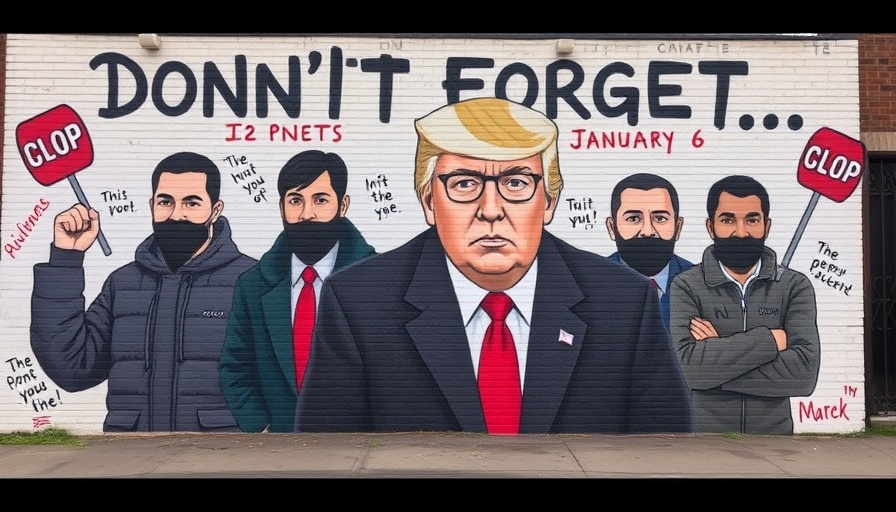
A Mural That Speaks Volumes: The Wall of Shame
In a bold artistic statement, a new mural entitled the Wall of Shame has emerged in Bushwick, Brooklyn—a piece crafted by artist Phil Buehler that challenges perceptions surrounding the January 6 Capitol riots. This installation, which launched on July 4, serves as a mosaic of stories, vividly illustrating the alleged crimes of over 1,500 individuals who were pardoned by former President Donald Trump for their roles in the insurrection. This artistic endeavor does more than just highlight individual actions; it recontextualizes the riotous event into personal narratives that can no longer remain faceless.
Understanding the Impact of The Wall of Shame
Buehler's sculpture spans 50 feet in length and 10 feet in height. Its design employs the colors of the American flag—red, white, and blue—to signify the various actions of the pardoned rioters. Red is designated for those who engaged in violence, blue for property destruction, and white for other offenders. This color-coding not only adds visual interest but also sets the stage for an emotional confrontation with the past. By transforming a historical event into tangible art, the Wall of Shame invites viewers to engage with the complex narratives surrounding the rioters, reminding us that they are more than just a statistic.
The Genesis of a Powerful Message
This mural is part of Buehler's broader trilogy aimed at confronting autocracy through art. His previous works, such as the Wall of Lies and the Wall of Liars and Deniers, exhibited the disinformation propagated by Trump and the Republican Party. This new installation not only builds upon that legacy but deepens the dialogue regarding accountability and the nature of civic duty in a democratic society. In an age where truth often feels subjective, Buehler exposes the stark realities of insurrection through what he describes as “the seductive power of facts.”
Art as a Medium of Resistance
During a recent interview, Buehler expressed his belief that artists possess a unique power to challenge misinformation and highlight truths often buried under partisan agendas. “Boy, would Magaland hate it if culture, music and art pushed back,” he stated. This sentiment encapsulates the essence of using art as a tool of activism, especially in the face of a polarized political landscape. As digital nomads traverse the globe, encountering diverse cultures and political contexts, the role of art can serve as a unifying factor—offering solidarity through shared social commentary.
The Importance of Reflection and Accountability
As we observe the Wall of Shame, it compels us to confront the questions lingering after January 6. How do we reckon with those who perpetrated violence in the name of a distorted version of patriotism? Buehler's work doesn't just serve as a reminder of a dark chapter in American history; it galvanizes both locals and tourists to ponder the implications of such actions as they explore the streets of Brooklyn. The mural invites viewers—many of whom may be digital nomads—to reflect on the intersection of art and advocacy in addressing fundamental societal issues.
What Travelers Can Learn from This Experience
For digital nomads interested in history and culture, engaging with installations like the Wall of Shame offers a rich learning opportunity. It is a reminder of the power of local art in shaping narratives that resist amnesia regarding civic responsibilities. Moreover, understanding the perspectives shared through public installations can elevate a traveler’s experience, transforming passive observation into active participation in the dialogue surrounding historical events.
Conclusion: Engaging with Our Past Through Art
The Wall of Shame serves as a poignant reminder to not only recount historical transgressions but also to engage in the ongoing struggle for truth and justice. As public installations continue to shape our understanding of social issues, we are encouraged to reflect upon our personal roles within these narratives. Whether through travel or daily life, embracing the lessons from artworks like Buehler’s can foster deeper connections to the places and cultures we're part of.
 Add Row
Add Row  Add
Add 




Write A Comment